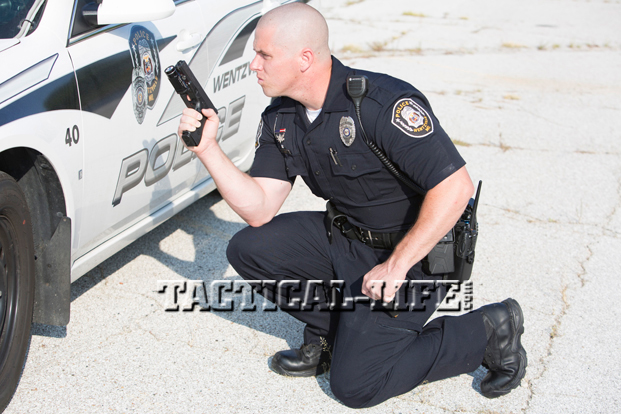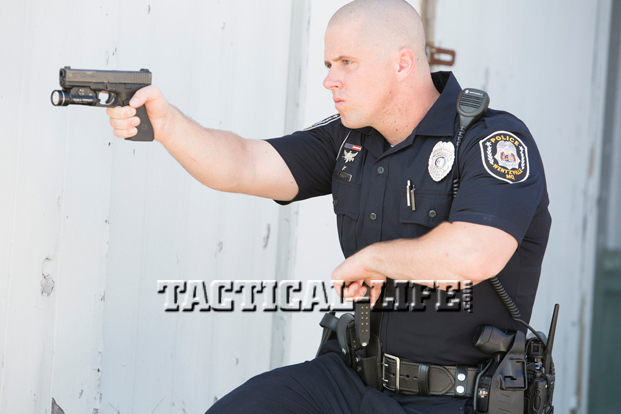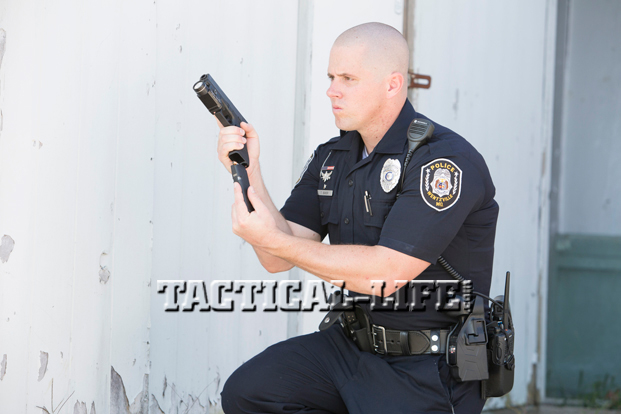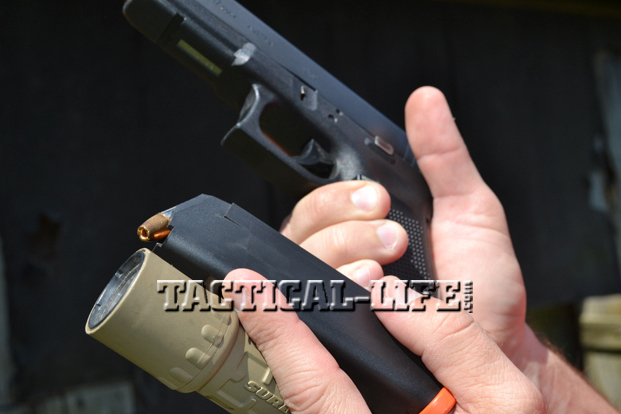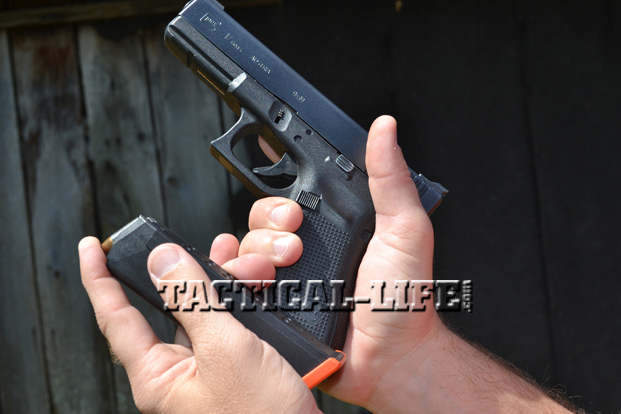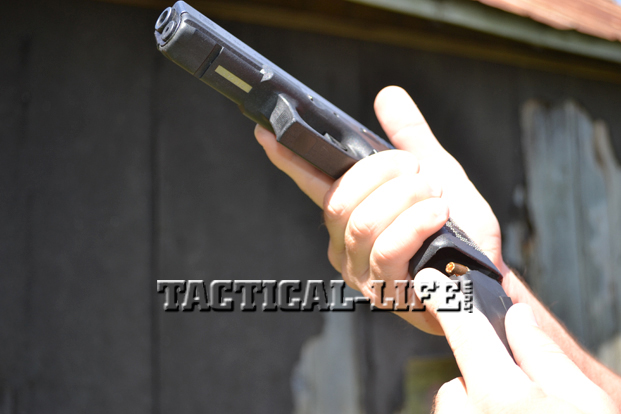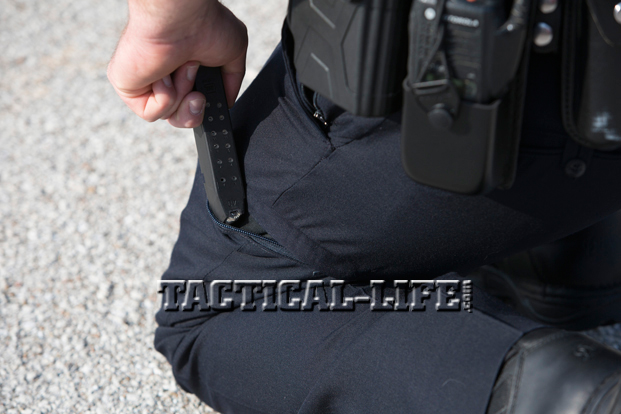The tactical or retained reload is the mainstay of most modern, mainstream firearms training programs. The concept is simple. You have fired X number of rounds in a dust-up, and you have a taken cover while there is a momentary lull. You use this time to refresh the ammo supply in your pistol. You do so in hopes that your opponent will not, thus giving you an advantage in the fight. There have been many versions of this reload over the years, and before we examine a few, we need to set a few definitions in place to get on the same page.
Setting the Record Straight
A major thing that I see in training, and sadly on the internet, is that many people talk around each other because they are attempting to say the same thing, but their understanding of the words is different. This is often the case, even though they are saying basically the same thing. We’ll also agree in advance that three things must take place before we even consider a tactical or retained reload: You must have time, distance, and cover prior to attempting a tactical reload. Without time, distance from your attacker, or cover that is adequate to stop incoming rounds from the attacker’s weapon system, you should not disassemble a perfectly good, functioning firearm in the middle of a gunfight. The definition of a tactical reload is the practice of taking a partially expended magazine from a semi-automatic pistol that still has some rounds in the magazine, a round still in the chamber in the pistol, and replacing it with a full magazine so the pistol is at maximum capacity again after the shots are fired. The partially expended magazine then goes into a pocket. This is a “just in case” magazine, and you would not want to put it back into a magazine carrier with other full magazines.
Advertisement — Continue Reading Below
The tactical reload is also very commonly referred to as a “retained” reload because you retain that partial magazine. When people refer to “tactical” reloads and “retained” reloads, they are saying the same thing in common usage. People often confuse a slide-lock or “emergency” reload with a tactical reload. I think it’s simply because of the word tactical. The slide-lock or emergency reload is just that, an emergency: The gun is empty. We need to refuel it. So we dump the empty magazine out onto the ground as we grab a fresh one, stuff it into the pistol and chamber a round.
Building Basics
The traditional tactical reload is often commonly done in sequence once the time, distance and cover have been obtained. The sequence starts with the shooter drawing out a fresh magazine with an index finger properly on the magazine. This is done just as they would an emergency reload. The gun is brought back into the shooter’s workspace, that basketball-sized “sphere of dexterity” that exists for most people directly in front of their chin. This area allows the shooter’s attention to remain downrange and yet have the power and dexterity to do the job at hand. The shooter drops the partial magazine into the palm of their hand and inserts the fresh magazine into the pistol. The partial magazine goes into a pocket. I have heard of some guys who advocate back-filling their magazine pouches—at that point, they take the partial magazine and put it in the last magazine pouch. I’ve even heard of some guys taking that partial magazine and inserting it backwards in the pouch to signify that it is a partial magazine. I do advocate back-filling your pouches, but I leave the partial magazine in a pocket.
Advertisement — Continue Reading Below
The traditional tactical reload works very efficiently. One of its greatest strengths is the fact that there is only a fraction of time when the magazine is out of the gun before the fresh one is inserted. This is especially important on some older-style semi-automatics with magazine-disconnect safeties, or to some law enforcement agencies that require magazine disconnects on their firearms. Any time the magazine is out of these pistols, it renders the pistol inoperable until a magazine is inserted. Whether we agree with the magazine disconnect as an officer safety tool or not, some agencies still swear by it, and they have to manage the techniques they teach accordingly.
The problems with the traditional tactical reload start to set in when a number of factors rear their ugly heads. The ability to juggle two magazines in one hand can be quite an IQ test for some folks. Especially when stress comes into play. A lot of times, a shooter will appear to be technically proficient in this technique. But, when you put a little physical exertion into the mix and the heart rate goes above 160, their technique might fall apart. Another complicating factor is hand size. Shortly after an instructor graduates firearms instructor school, or even a National Rifle Association instructor school, they quickly learn that shooters do not come in a one-technique-fits-all size. Smaller shooters tend to struggle with this technique more than shooters with bigger hands. Another factor that can cause this technique to fall apart is wearing gloves. Some gloves aren’t as grippy on the palms as they are on the fingers, and the partial magazine tends to slide out of control and onto the ground.
Another factor is the fact that a large percentage of shootings occur in low light. So now, we have complicated things more with the introduction of a handheld flashlight in many cases. Often, in low-light Simunition exercises, I have witnessed accomplished shooters attempt to stuff a SureFire 6P flashlight into their magazine well in the heat of the moment because of an elevated heart rate from being shot at. Now, I grant you, there are many good techniques that a shooter can use to stow the flashlight during a reload, such as turning the light off and placing it under their arm. But, the longer I am a student of training, the more I look to streamline the number of techniques we practice religiously as primary techniques.
Advertisement — Continue Reading Below
Gunfight Success
In comes the sequential tactical reload. The concept is similar. Before attempting it, you must have time, distance and cover. The shooter will first bring the pistol back into their workspace, that basketball-sized sphere of dexterity at about chin level. The shooter removes the magazine and stows it in a pocket. This leaves the pistol with a round in the chamber and without a magazine for a short time. Once the partial magazine is stowed in a pocket, the shooter will grab and index a fresh magazine and insert it into the pistol. This sequential tactical reload seems to be a bit more resistant to stress, hand size and flashlights. It is, however, slightly slower when you run it on the clock. The biggest detractor of this technique is the amount of time that the gun is unloaded. This is usually what you hear people complain about with this technique. In pistols that do not have magazine disconnects, the time factor during the sequential tactical reload is less of a factor—you still have a round in the chamber. The simple answer: If the attacker closes ground on you and surprises you, fire the round in the chamber and reload the pistol as you are moving.
What I advocate is this: Train with both techniques. Put both techniques on the timer. Introduce stress, gloves and a flashlight. Add a five-second penalty any time you drop a magazine. See which technique holds a faster time for you over an average of attempts.
Advertisement — Continue Reading Below
